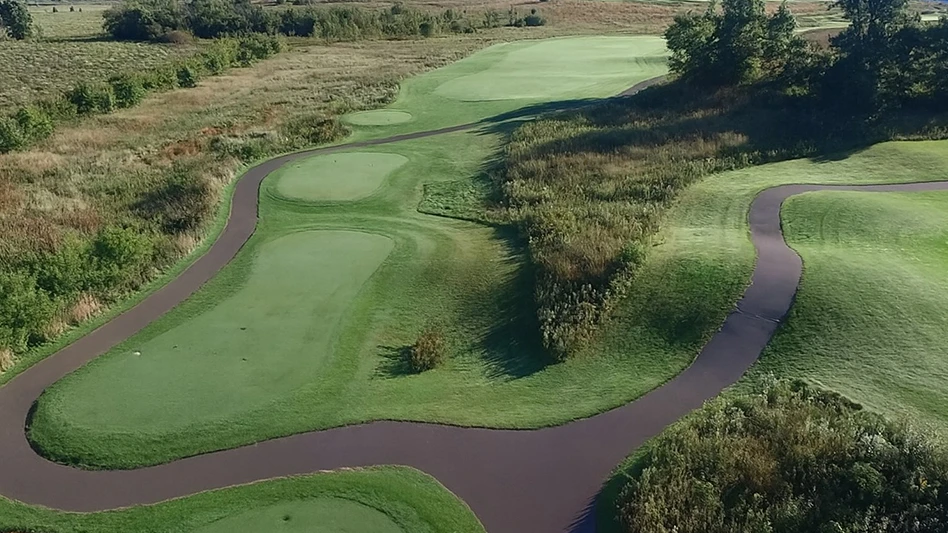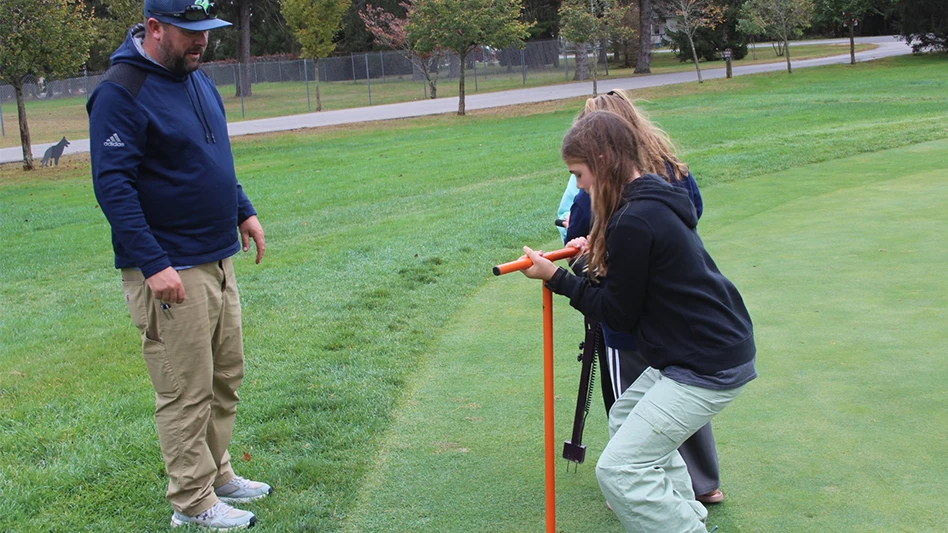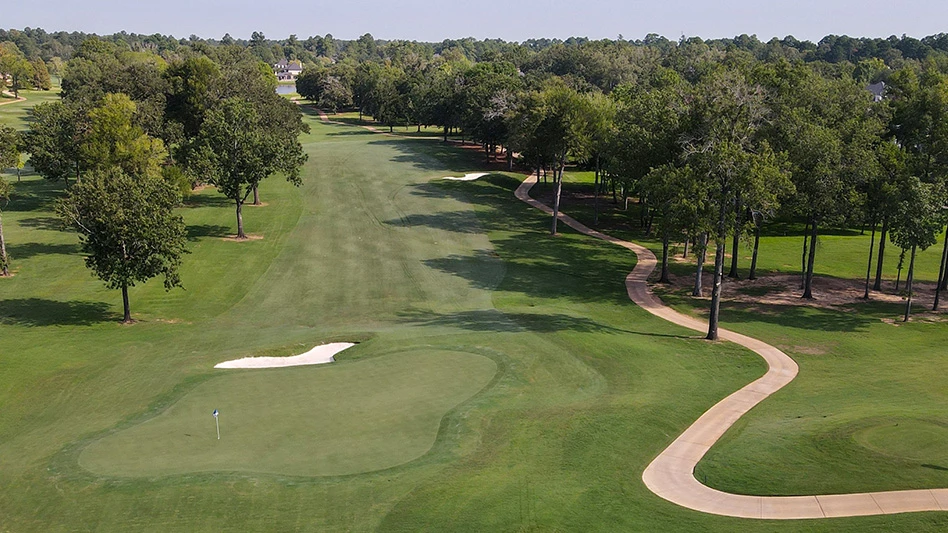British author A.A. Milne once says, “Weeds are flowers, too, once you get to know them.” But who wants to get to know them? Certainly not golf course superintendents.
Fortunately for those charged with maintaining impeccable playing surfaces, labs and research facilities are filled with people learning everything there is to know about these wild, unwanted plants.
Zac Reicher, a green solutions specialist at Bayer Environmental Science, for instance, has been studying turfgrass and weeds for more than 34 years. Taking a look at cool-season golf course grasses, specifically, he says annual bluegrass always ranks at the top of the list for weeds, but has plenty of company. Goosegrass is “problematic” in the Transition Zone, but seems to be spreading more into the North and white clover is common in cool-season fairways and roughs.
“Weed control in no-mow roughs or natural areas is becoming problematic,” Reicher says. “Canada thistle, milkweed, and other agricultural weeds are common since mowing is not used as a primary control method.

“Resistant weeds are becoming more common in cool-season turf,” he adds. “Annual bluegrass, crabgrass or goosegrass resistant to glyphosate (Roundup) or pre-emergence herbicides have been around for years in fairways of warm-season grasses. Recently, herbicide resistance has been reported in weeds either in or commonly found in cool-season turf, including crabgrass, annual sedge, yellow nutsedge, broadleaf plantain and spotted spurge. The presence of resistant weeds reinforces the need to maximize cultural practices to minimize weed pressure, make herbicide applications at the plant stage and seasonal timing when weeds are most susceptible, and rotate and/or tank-mix herbicides with different modes of action.”
Additionally, summer annuals like spurge, knotweed and oxalis tend to be more common next to cart paths, Reicher says.
“None of these weeds are different than past years, but goosegrass appears to be moving farther north,” Reicher says. “The increased use and maturity of no-mow areas [is] increasing weed pressure in those areas, and the resistance issues appear to be on the rise ... or at least we are becoming more aware of the problem.”
Crabgrass, goosegrass, spurge, clover and nutsedge are the top weeds superintendents will likely fight in 2016, says Kyle Miller, a BASF senior technical specialist.
“These have been identified as those that supers mention first in most all surveys in the northern U.S.,” he says, adding growing conditions during the year will affect the level of pressure seen from these weeds. “A wet year will mean more nutsedge and a long, hot, dry year will likely mean weakened turf, increasing the weed pressure from crabgrass, goosegrass, clover and spurge.”
Whether it’s climate change or a cyclic rise in temperatures, Dean Mosdell, a Syngenta technical manager, reports seeing more crabgrass in northern regions of the country than in the past.
“Other factors that can influence weed competition include management practices, such as herbicide applications,” Mosdell says. “The restrictions on MSMA, use of post-emergence herbicides rather than a broadcast pre-emergence herbicide are examples of program changes. I suspect the increases in doveweed, kyllinga and dallisgrass (other paspalums as well) populations may be attributed to changes in management practices.”
Factors contributing to an increase in specific weed pressure are as varied as the weeds themselves. Reicher sees change as a constant in this battle.
“Weed pressures will continue to change as weeds adapt to our management practices such as mowing heights, herbicide use, irrigation, etc.,” Reicher says. “Weed pressures will change as we increase acreage of no-mow areas. Weed pressures will change as seed and propagules move from state to state naturally by animals, or by golfers and possibly by turf maintenance equipment, such as contract aerifiers or loaner equipment. Weed pressures can also change with extreme weather events and changes in temperature and rainfall.”
A warmer winter – as experienced across much of the northern United States early on – could result in better/denser turf cover, which will discourage weeds, says Dave Gardner, associate professor of turfgrass science at The Ohio State University. However, less cover or turf loss due to diseases may favor more weeds.
“The one x-factor, I suppose, is if the winter stays warm and then we have an early spring, then pre-emergence herbicides will need to go down a week or two earlier, which enhances the chances of problems with breakthrough during the summer months,” Gardner says.
The best strategy for weed control and resistance management, as well, is a multi-prong approach including a pre- and post-emergence herbicide and manual intervention as needed, Mosdell says.
“A weed-control plan should include maintaining healthy turf for better competition, pre-emergence herbicides as a broadcast treatment or to areas mapped as problem areas and early post-emergence applications to escapes or new areas of weed development,” Mosdell says. “And don’t let any weed go to seed, spot spray or hand remove.”
For pre-emergent control of crabgrass and goosegrass, Miller says to not be late with your application and make a sequential application if needed to provide strong weed control late into the season.
“With weeds like spurge and clover, we normally make post-emergent applications,” Miller adds. “The secret here has always been get them when they are small, actively growing and the most susceptible. Larger weeds are harder to control. This would also be the case for crabgrass and goosegrass if you have escapes and need to make a rescue or post-emergent application. Smaller is better.”

Cultural practices to maintain dense turf will minimize pressure and help maximize control from herbicides – both pre- and post-emergent, Reicher says. “Control programs for annual bluegrass must include cultural practices, growth regulators and herbicides to be most effective,” he says. “Growth regulators used for annual bluegrass control include Trimmit (paclobutrazol) and Cutless (fluprimidol) along with these two in a variety of mixes. These products are usually applied on two- to four-week intervals or on a growing degree day schedule, and it is critical to apply these growth regulators during the spring and fall when annual bluegrass is highly competitive.
“Post-emergence herbicides such as Prograss and Velocity can be effective, especially when combined with pre-emergence herbicides and/or growth regulator regimes,” he adds. “The latest herbicide PoaCure has not been released yet, but is on target to be released in the next 18 to 24 months. This herbicide shows tremendous potential to control annual bluegrass in greens, but like with all herbicides, it will be important to rotate chemistries with PoaCure and be on the lookout for annual bluegrass tolerant to this herbicide.”
For white clover, timing is a common mistake for superintendents. “White clover is most problematic on low nitrogen areas and is fairly common in fairways and roughs,” Reicher says. “Many superintendents want to attempt control in June and July when the white flowers of this weed are most visible, but September to October applications of typical three-way broadleaf herbicides are most effective for this perennial weed.”
As for controlling summer annual broadleaves in wear areas next to cart paths, try limiting traffic and encouraging turf density, Reicher says.
“Curbs, pavers or large cobbles in wear areas will effectively keep carts on the path,” he says. “Herbicide options include multiple applications of broadleaf herbicides during the summer as these weeds may continue to germinate for months. Pre-emergence herbicides for crabgrass may slightly help to limit summer annual broadleaves but isoxaben (Gallery) is a pre-emergence herbicide labelled specifically for broadleaf weeds.”

Explore the February 2016 Issue
Check out more from this issue and find your next story to read.
Latest from Golf Course Industry
- From the publisher’s pen: Conscientious of a bigger role
- Bernhard and Company partners with Laguna Golf Phuket
- Terre Blanche showcases environmental stewardship
- VIDEO: Introducing our December issue
- Bernhard and Company introduces Soil Scout
- Nu-Pipe donates to GCSAA Foundation’s Centennial Campaign
- GCSAA enhances golf course BMP tool
- Melrose leadership programs sending 18 to 2026 GCSAA Conference and Trade Show





